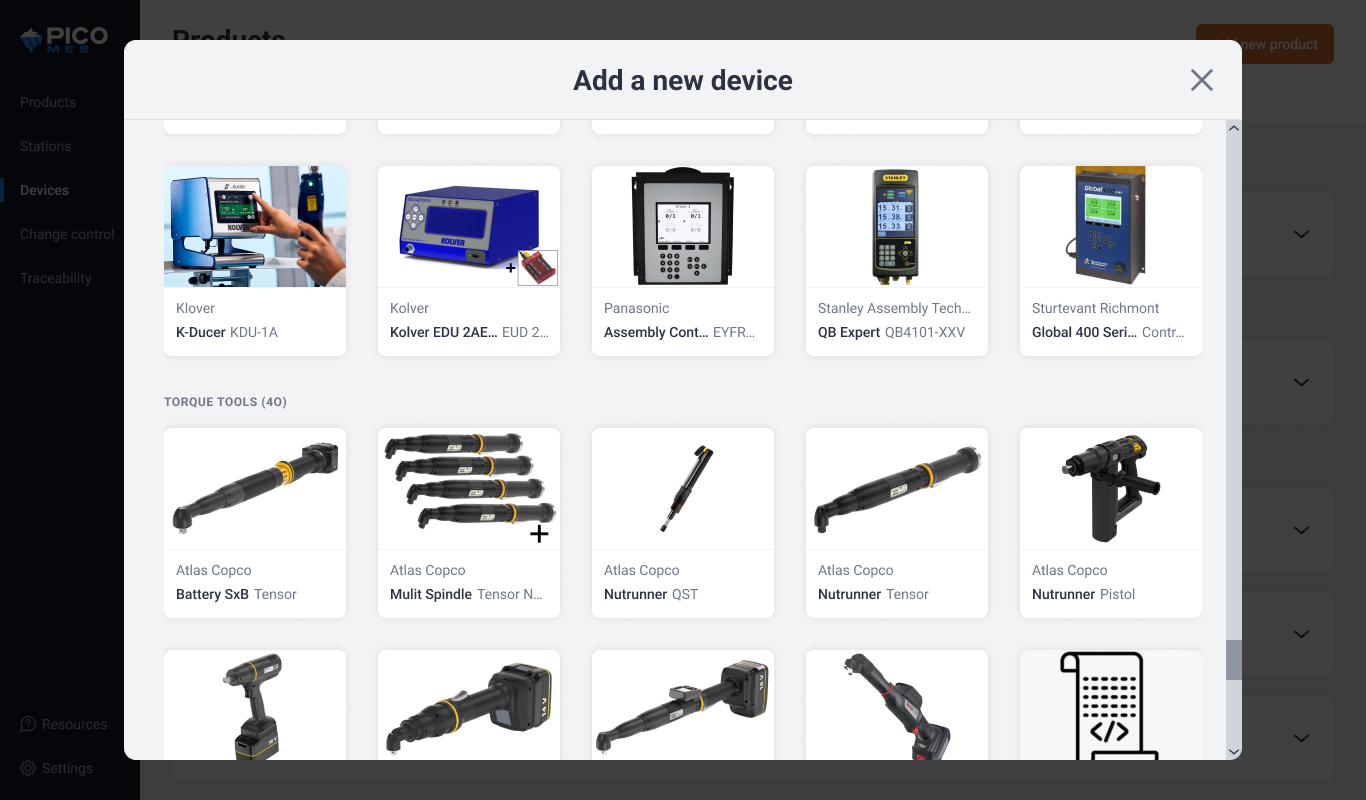#{ item.name }
#{ truncateText(item.metadescription) }
The McKinsey Global Institute estimates that the manufacturing industry generates a whopping 1.9 petabytes of data per year, making it one of the most data-prolific industries in the world. This massive amount of data is only useful if it can be transformed into actionable insights, and this is where having a robust and versatile data analytics tool becomes important.
Automated data capture and real-time analytics are increasingly becoming the Industry 4.0 standard, but with so many options available, how do you choose the best platform for your assembly operations? Let’s identify the key features to look for in a data analytics tool.
Automation begins with how data is captured. Gone are the days of operators writing down measurements, manually entering data logs, and storing them in binders on dusty shelves around the shop floor.
In today’s world of assembly manufacturing, smart tools deliver the highest quality data from every screw fastened and every leak test performed, and more, so it’s important to choose a data analytics platform that seamlessly integrates with your shop floor tools. Eliminating manual data entry means reducing the burden on your operators who no longer need to spend time writing down data from every build, a process traditionally plagued with errors.
Your platform of choice should also store your data in a secure and compliant manner, as well as offering scalability to meet the needs of your growing production. If you opt for an on-premise deployment of your system, be sure to back up your data to the cloud to maximize security and storage.
A winning data analytics tool doesn’t just collect measurements, it also records metadata for every build, including which process was followed, who the operator was, and when the build started and stopped. Contextualizing build data with this metadata transforms raw figures into a comprehensive narrative about each part you produce.

PICO's traceability feature makes it easy to search by part number, serial number, or job order to quickly find build data
This serialized data should be readily available and easily accessible, so look for a tool that also offers full backwards traceability. Accessing historical build data is not only crucial to reporting on quality and understanding the process and operator efficiency, but it serves as a linchpin for regulatory compliance and customer satisfaction. In the event of a recall or quality dispute, having full documentation of a part’s assembly history at your fingertips can safeguard both your reputation and the trust you have built with your customers.
To make sense of your data and gain actionable insights, a data analytics tool should provide you with real-time analytics in easily digestible dashboards. A key ingredient of optimizing production efficiency is making quick, data-driven decisions and your platform should enable you to do this with minimal time and effort spent setting up a reporting structure that makes sense to you.
Analyzing data across multiple builds can provide useful insights into:

Workstation status is displayed in real time in PICO's customizable dashboard that can be posted to monitors around the shop floor
Understanding these aspects of your operation can help you monitor for issues or outliers, and ultimately creates opportunities for continuous improvement across your processes, workforce, and overall equipment effectiveness (OEE). Look for a tool with a user-friendly interface that even non-technical users are able to navigate with ease, and one that offers customizable dashboards to help you visualize your production in real time.
Avoid isolating your data from the rest of your tech stack by selecting a platform that seamlessly integrates with Business Intelligence, ERP, SCADA, and communications systems. Your analytics platform should not be a standalone repository of data, but rather contribute to the broader digital ecosystem of your business.
Some common and useful integrations to look out for include: Power BI, Tableau, HEX, MS Office Suite, Sigma, NetSuite, SAP, Infor, and Slack. Enabling data sharing between these systems opens the door to more complex analytics unique to your business and insights into other key areas such as inventory management and cost of goods sold (COGS) calculations.
Choosing the right manufacturing data analytics tool requires careful consideration of factors such as data automation, real-time visibility, traceability, and integrations. It should allow you to access and process large amounts of data without needing to hire data engineers or relying on a team of analysts. Moreover, your data analytics platform should be:
Making sure your factory is equipped with accurate, high-quality data and insightful analytics is necessary to improving process efficiency, product quality, and production rates.
PICO offers robust data automation and analytics capabilities within a scalable, affordable, and quickly deployable software platform. We error-proof your assembly by connecting your shop floor tools to digital work instructions and capturing every detail of every build - all in one place.
Watch this demo to learn about our data and analytics features, and later take a self-guided tour to test them out for yourself!
Listen to how real customers have leveraged PICO data capabilities to improve their assembly operations:
#{ truncateText(item.metadescription) }
Step into the future of factory operations with Pico MES. Start your journey toward a more efficient, error-proof factory floor today.
